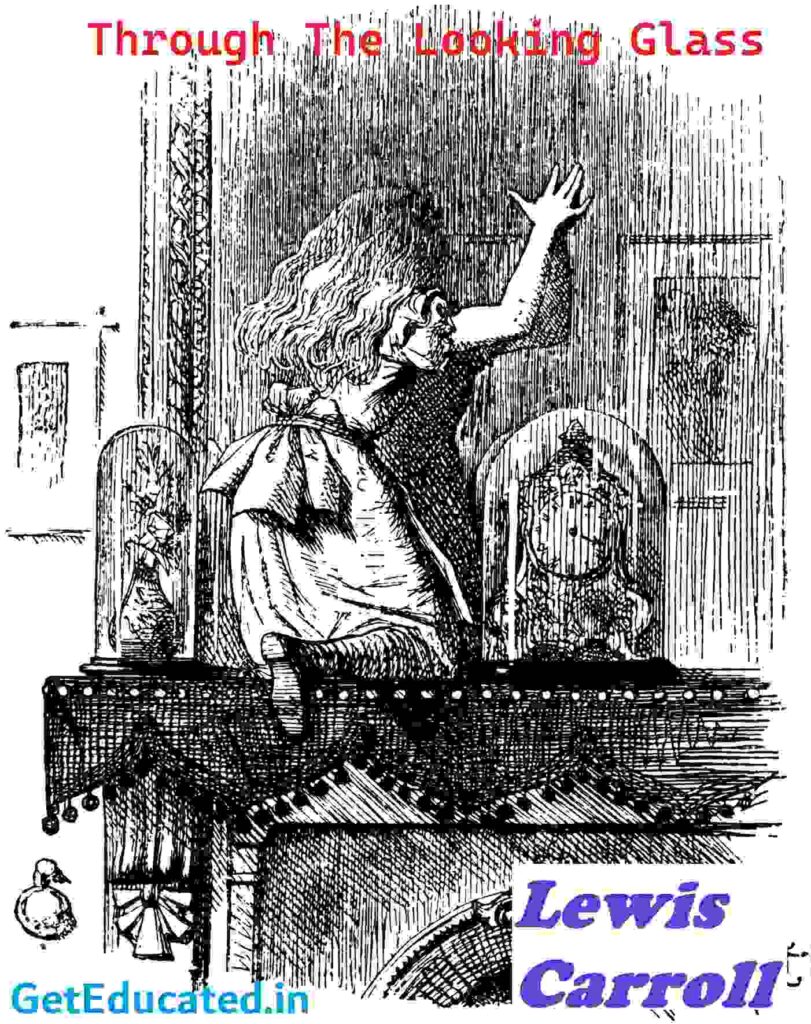
Tweedledum and Tweedledee are identical fat men and they stand with their arms around each other’s shoulders. Alice can tell them apart because one has “Dum” embroidered on his collar and the other has “Dee” on his She supposes that they must have “Tweedle” at the back of their collars but as she starts to move around them to look, Tweedledum says that she should pay if she’s going to treat them like waxworks Tweedledee says that she should speak. Alice apologizes and remembers an old song about Tweedledum and Tweedledee, in which the brothers fight over a rattle but forget their fight when a big crow flies too close The brothers say that they know what Alice is thinking about but it’s not true.
When Tweedledum and Tweedledee immediately chastise Alice for not being polite, it again suggests that Alice will have to try much harder to figure out how to operate in this world without offending anyone there’s little evidence that Tweedledee and Tweedledum looked like they were actually alive until they spoke. after all. This essentially ‘sets Alice up to fail as she moves through Looking-glass World and tries to figure out how to properly conduct herself, especially when the brothers then tell her that the song is inexplicably wrong everything she knows is, apparently, not correct.
Politely, Alice asks the best way through the wood. Tweedledum and Tweedledee grin at each other. Alice thinks they look like schoolboys, so she points at Tweedledum and says, “First Boy” and then “Next Boy” to Tweedledee. snap to attention, but Tweedledum reprimands Alice for not greeting them and shaking hands. Keeping one arm around the other, the brothers each hold out a hand for Alice to shake. Not wanting to offend either brother by choosing one over the other, Alice grabs both hands at the same time. They dance in a circle and Alice hears music. When politeness doesn’t work for Alice, she resorts to mischief-a reminder that even if she’s getting older, she’s still very much a child. When she deliberates over whose hand to shake first so that she doesn’t offend anyone, it illustrates again how hard Alice is trying to do the right thing and make everyone feel comfortable-though often at her own expense.
Tweedledum stops dancing and the music stops. He and Tweedledee drop Alice’s hands and Alice awkwardly tries to think of how to begin a conversation. She asks if they’re tired. The brothers thank her for her concern and then Tweedledee decides to recite “The Walrus and the Carpenter” for Alice, since it’s the longest poem he knows. They ignore Alice’s request for directions. “The Walrus and the Carpenter” tells the story of a Walrus and a Carpenter walking along the shore. They invite oysters to walk with them. The old oysters refuse, but many young oysters happily follow. The group walks about a mile and then they sit on a low rock The Walrus announces that it’s time to talk, but he agrees to let the oysters catch their breath. The Walrus calls for bread, pepper, and vinegar so they can all eat. The oysters fearfully confirm that they’re not going to be eaten. The Carpenter and the Walrus cut bread and lament that they tricked the oysters. The Walrus sobs as the Carpenter suggests that they all head home. The oysters don’t answer-the Walrus and the Carpenter ate all of them.
After this recitation, Alice says she likes the Walrus because he was sorry for the oysters. Tweedledee points out that he ate more than the Carpenter. Alice switches and says that she then likes the Carpenter better, but Tweedledum says that the Carpenter still ate as many oysters as he could. Alice says they were both bad, but stops when she hears that sounds like a train. Tweedledee says it’s just the Red King snoring and invites Alice to come look at him. They what he’s dreaming about and Tweedledee says that the king is dreaming about Alice-if he woke up, she’d disappear. Alice points out that Tweedledee and Tweedledum would disappear too, but they don’t answer.
Alice’s attempt to figure out which character was the better person pokes fun at philosophical arguments that have no one correct answer-it’s possible to argue that either character is the better one. Alice’s inability to come to a decision, combined with this conversation’s inclusion in a children’s book, suggests that people shouldn’t put so much stock in these philosophical arguments. It doesn’t matter, really, which answer one chooses, as there’s no single correct answer.
Tweedledum tells Alice that she’s not real, which makes Alice cry. Alice thinks this is all ridiculous and suggests that if she weren’t real, she wouldn’t be able to cry. Tweedledum contemptuously says that Alice’s tears are fake. Alice tells herself that the brothers are talking nonsense and calms down. She again asks for directions out of the wood and asks if it’s going to rain. Tweedledum opens up an umbrella and announces that it won’t rain under his umbrella, but it might rain outside.
This conversation about the Red King’s dream draws on the idea that humans exist in God’s dream. Now that Alice is the subject who’s only alive in someone else’s dream, it’s very anxiety inducing for her. As with the philosophical argument, the novel again makes the case that it’s not worth getting too worked up about- there’s no proving it either way, and it just makes Alice sad.
Alice is ready to give up when Tweedledum grabs her, points to a white object, and chokingly asks if she sees it. She says that it’s just an old, broken rattle. Tweedledum begins to rage as Tweedledee tries to close the umbrella around himself. Tweedledum calms down suddenly and asks his brother if he agrees to a battle. Tweedledee does, so the brothers skip away and return with a collection of blankets, rugs, and linens. They make Alice help them button and tie everything onto them. They agree to fight for two hours until dinner and then wam Alice to stand back so they don’t hit her. She tries to shame them into giving up, but they ignore her. It starts to get dark quickly and the brothers realize it’s a crow. They run away and Alice notices a shawl flying.
Tweedledum and Tweedledee are mirror images of one another, reintroducing the theme of inversion. With the exception of their names, the two little fat men are identical in looks, manner, and stance. They exhibit perfect symmetry, standing together with their arms around each other, so that when they extend their free hands they each reflect the other’s body position. Their conversation also displays a symmetrical position designated by Tweedledee’s favorite expression, “contrariwise.” “Contrariwise” functions as a transitional word that flips the premise of the conversation Tweedledee usually addresses the other side of whatever Tweedledum just said. The twins’ reversal of language becomes apparent in the following exchange with Alice TWEEDLEDUM: know what you’re thinking about… but it isn’t so, nohow.
